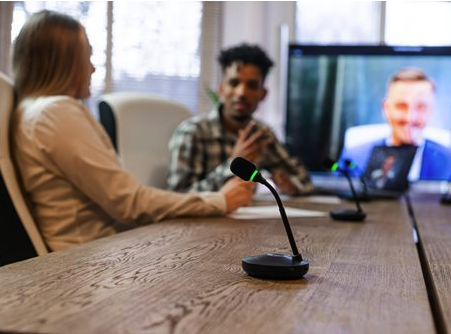Wireless Frequencies
With the ever-decreasing bandwidth associated with wireless microphone technology in the UHF band, other wireless bands had to be explored. There is the VHF (Very High Frequency) band with a range of between 25 and 300 MHz, with most of this now unlicensed for wireless microphone operation. Then there is the 900 Mhz band. This falls into the 900-928Mhz range and is used frequently, although restricted by internet service providers who have established networks in this range. The UHF band, which operates in the 400 Mhz to 900 Mhz range. UHF has been widely used for various types of wireless microphones as well as other commercial communications. UHF was severely impacted by a FCC ruling that effectively banned any wireless microphones in 698 to 806 MHz portion of the UHF spectrum in 2010. Then in 2020, largely restricted this further to 600 MHz or above.
This portion of the wireless spectrum is now controlled for UHF TV broadcast and commercial use only. Then there is 2.4Ghz, which is allowed to operate within the 2.400 Ghz and 2.483 Ghz only. As you might imagine, this portion is also heavily used by Wi-Fi devices, which can cause unwanted dropouts as well as low component use, typically 4 units or less.
Finally, we come to DECT, which stands for “Digital Enhanced Cordless Telecommunications” and was originally launched in 1993. This operates in the 1880-1900 MHz band with channels available from 1881.792 to 1897.344 MHz with a gap at 1728 MHz. In the United States, the DECT frequency allocation is 1920 to 1930 MHz. This is now commonly referred to as DECT 6.0. This band will not interfere with Bluetooth or Wi-Fi technologies and allows for significant channel counts to be used.
Why DECT?
This technology virtually eliminates interference from other wireless devices and connectivity up to 350 feet. In some cases, this system can also use high channel density with up to 96 microphones capacity. The downside is that the system requires it’s own wireless network with access point and repeaters in some cases. There is additional cost for this equipment, but for larger systems, it is offset by the functionality of the system. Also, no other devices use this portion of the wireless spectrum.
The only other disadvantage that must be understood with DECT is the TDMA (Time-Division Multiple Access) technology it uses. There is an inherent delay or latency with the system, as each device must connect to a predefined time slot. This delay or latency is typically 18-20ms between the input of a microphone to the output of the access point. This can impact live applications and must be understood as part of any DECT system. For UC usage, it is unlikely that is would ever be noticed as there is already inherent delay for any UC communication.
According to Holger Stolze of Yamaha UC, “The problem of latency can be controlled by where the loudspeakers are placed with respect to the microphones in a voice lift scenario, and therefore DECT devices are not typically recommended for performance use such as singing or other live performance applications.”

So, with this understanding, DECT has quickly become the most widely used wireless technology for conference applications. Also, in many instances, the manufacturer will assist with applications, access point, and/or repeater location and how the system should be set up for the intended use. Panasonic Professional has a team of engineers who will provide a complete set of instructions, programming notes, and even room diagrams to assure the system functions properly. Petro Shimonishi of Panasonic US tells it this way:

“Panasonic leverages our 30+ year history of innovation and leadership in DECT wireless technology. These products have been designed with the end-user in mind. The system can even be integrated with our PTZ cameras to allow for voice triggered camera presets for a more seamless conference experience.”
Finally, the other real advantage of DECT over other more prominent wireless microphones like UHF is that it does not require frequency coordination, as it is automatically managed by the number of microphones in a given system. This is unlike UHF, which requires careful and sometimes difficult frequency coordination where multiple channels are used or where adjacent units can bleed into the spectrum, causing unwanted dropouts or interference.
The bottom line here is the DECT wireless has quickly become the gold standard for teleconference and videoconference applications. Excellent sound quality and ease of use keep these products in high demand. When you think of conference applications and need a wireless solution, contact your Exertis Almo representative or visit ExertisAlmo.com. Our Audio Team has all the right tools for your application with products by Shure, Sennheiser, Audio Technica, and Panasonic, just to name a few. We are always ready to assist you with the very best solutions for your project.
References:
- Holger Stolze, Yamaha UC
- Dave Dusman, Shure Incorporated
- Jeff Beck, Audio Technica
- Petro Shimonishi, Panasonic Professional

John Fuqua | CTS, Dante
Business Development Manager
Supported Manufacturers: Audio Applications, Amplivox, Audix, Bose, Denon, Marantz, Rane, Shure, Sennheiser, Yamaha UC








